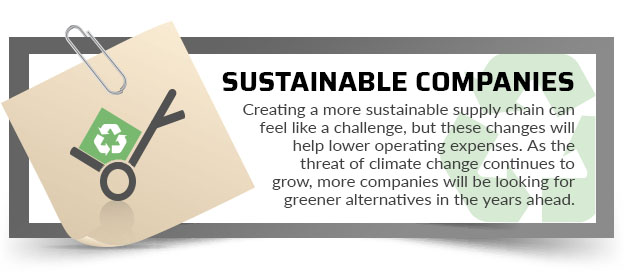 As concerns over global warming and other environmental problems grow louder than ever, many in the shipping industry have started looking for greener alternatives. Shipping accounts for 9 percent of all U.S. greenhouse gas emissions, nearly 500 million metric tons annually indirect emissions. Companies are looking to lower their greenhouse gas emissions as much as possible to reduce their effect on the environment.
As concerns over global warming and other environmental problems grow louder than ever, many in the shipping industry have started looking for greener alternatives. Shipping accounts for 9 percent of all U.S. greenhouse gas emissions, nearly 500 million metric tons annually indirect emissions. Companies are looking to lower their greenhouse gas emissions as much as possible to reduce their effect on the environment.
But these new green shipping initiatives aren’t just about saving the planet; they’re also designed to lower operating expenses by reducing fuel consumption. Companies can also use these initiatives to lure environmentally conscious clients.
If you’re looking to go green with your shipping practices, learn more about the latest trends in green shipping and how you can use these initiatives to your advantage.
WHAT IS GREEN SHIPPING?
The term “green shipping” means reducing the resources and energy used to transport goods and people from one location to another in order to preserve the environment and reduce environmental pollution. Green shipping can affect all aspects of the global supply chain, including warehousing and various shipping methods, such as freight truck, maritime and railway shipping. New shipping initiatives are designed to lower fuel consumption and greenhouse gas emissions across all three sectors, typically by making these vehicles more energy-efficient, reducing cargo weight and implementing new technology. Companies may also consider changing the layout of their warehousing facilities, buying used shipping containers and reducing energy consumption as they prepare their goods for shipment.
TRENDS AND BEST PRACTICES FOR GREEN SHIPPING
Engineers and developers are changing the way companies think about green shipping. New technology is helping companies reduce their carbon footprints by making the machines that move products from place to another more energy efficient. These companies may not be ready to invest in a new fleet of vehicles, but these technological trends can improve fuel efficiency in existing vehicles, helping these companies make the most of their fleets.
When it comes to maritime shipping, cargo ships are among the dirtiest and highest polluting machines in the world, with most of the pollution taking place in the middle of the ocean, outside the jurisdiction of any government and far away from the average consumer. Yet, these vessels carry 53 and 38 percent of U.S. imports and exports, respectively, the largest share of any transportation method. New technology is being developed and deployed to make these machines more energy-efficient, reducing ocean-based pollution and other environmental hazards.
Several green maritime shipping initiatives have been in the works for years, including modern-day sails that harness wind energy to replace up to 20 percent of a ship’s fossil fuel consumption. Some models even come with built-in solar panels, increasing their access to green energy.
Samsung Heavy Industries Co. and Mitsubishi Heavy Industries have also developed a way of reducing friction between a ship’s underbelly and the ocean, minimizing the amount of fuel required to move these vessels through the water. The system releases tiny bubbles out of the ship’s underbelly, creating a type of lubricant that helps the vessel cut through the water. According to the company, this technology can reduce fuel consumption by 4-5 percent.
ROBOTS TO CLEAN THE HULLS
When moving goods through the water, grasses, barnacles and other organisms often grow on the hulls of vessels, which reduces fuel efficiency. These organisms make it more difficult for ships to move through the water, making their designs less aerodynamic. But a startup called Hullbot has developed robot cleaners that automatically remove these organisms. They use thrusters to stay attached to the hull, removing organisms with nylon brushes and built-in vacuums.
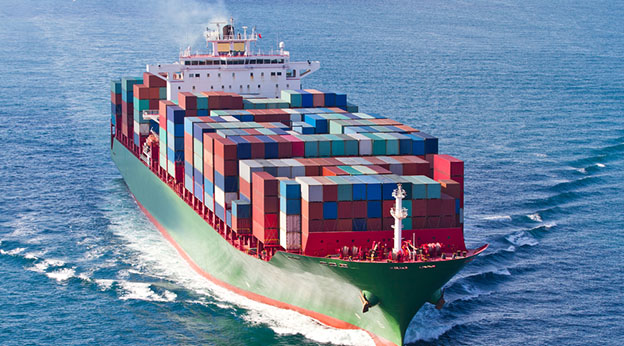
Other companies are looking to change the way we power maritime cargo ships. Some shippers are switching to lighter marine gas oil, hydrogen fuel or liquified natural gas. These fuel sources don’t pollute the environment as much as regular fuel, reducing carbon emissions. Others are looking into electric maritime vessels, but these ships tend to weigh hundreds of thousands of tons and can only travel around 50 miles before recharging.
Your company probably isn’t in the maritime shipping business, so implementing some of these trends may be beyond your reach. When transporting goods across the ocean, research the shipping company and see whether they’re implementing some of these fuel-efficiency initiatives. You can always take your business to a more environmentally conscious shipping company if it means reducing your carbon footprint. Stay up to date with these trends, so you can take advantage of new technology as it becomes available.
HOW TO GET STARTED
If you’re looking to reduce your company’s carbon footprint, learn how to implement green shipping practices throughout your supply chain, including warehousing and trucking.
GREEN TRUCKING
Most companies rely on freight trucks when moving their products from one location to another. Trucks emit large quantities of greenhouse gases, polluting the environment and contributing to global warming. If your company uses freight trucks to transport goods, implement these practices to reduce your carbon footprint.
-
- Real-Time Trucking: Real-time tracking can help you reduce your fleet’s effect on the environment. The more data you collect on these vehicles and your shipping routes, the more you can reduce unnecessary fuel consumption. Attaching GPS devices to your fleet and recording route information gives you the tools you need to reduce CO2 emissions. If you know where your trucks are at all times, you can make changes to the route in real-time, so your drivers always take the fastest route. By recording and analyzing route data, you can glean new insights into your trucking routes, helping you avoid costly delays and added fuel consumption. You can also integrate this data with a map-based system, helping you keep up with the latest accident information, construction projects and other updates that may affect your routes.
- Minimize Empty Return Trips: Recording route and transportation information can also help you minimize the number of empty return trips. Your company may spend a fortune on fuel and logistics just to move your truck back to its place of origin without any cargo on board. Use this data to streamline the shipping process, so your trucks can pick up a return shipment or complete another shipment instead of just coming back empty-handed. Reorganizing your supply chain can be a team effort. Try partnering with other companies and warehouses to limit empty return trips. If you keep a freight truck at its destination or another warehouse until it can complete another trip in the nearby area or return with more goods in tow, you can make the most of your fleet and reduce fuel consumption.
Truck Cabin Temperature Control: Many truck drivers sleep in the truck cabin instead of finding lodging for the night. This usually means the driver will idle the engine all night in order to keep the cabin a comfortable temperature, but this will deplete precious fuel and inflate your operating expenses. But a new engine management system known as IdleSmart monitors the truck engine and the battery to improve cabin comfort while idling the engine in the minimum amount of time, which saves fuel, lowers operating expenses and reduces your company’s effect on the environment.
You don’t have to waste fuel and keep your drivers comfortable at the same time. Use this new technology to limit idle time without subjecting your staff to extreme temperatures.- Truck Modifications: Regularly maintaining your fleet can also help you reduce fuel consumption and CO2 emissions. If you fall behind on repair and maintenance, your trucks will consume more fuel with every trip and further pollute the environment. But you can also modify your fleet with certain fuel-efficiency innovations to reduce expenses and limit your effect on the environment. Try investing in aerodynamic panels, wide-base tires, low viscosity lubricants, exhaust system upgrades, eco flaps, APUs (auxiliary power units) and programmable speed limitations to improve the fuel efficiency of your vehicles. While these changes may seem small, they will contribute to long-term savings that will help you build a more environmentally conscious supply chain for your company.
- Driving Habits: In addition to investing in these environmental upgrades and modifications, you can also train your employees to change their driving habits, thus reducing their effect on the environment. If your drivers reduce their speed by just five miles per hour, they can dramatically improve their fuel efficiency. Driving slow also reduces the risk of accidents and improves driver safety. Incorporate these changes into your training manuals and use real-time GPS trackers to monitor the speed of your vehicles. If one of your drivers goes over this newly imposed speed limit, you’ll be the first to know.
- Driverless Trucks: You’ve probably heard a lot of talk about driverless cars and trucks in recent years. While this technology is still a few years away from widespread implementation, driverless trucks can help you reduce fuel consumption and CO2 emissions. You can program these driverless systems to stick to the fastest route and maintain lower speeds to improve fuel efficiency without having to retrain or consult with your drivers or trusting your staff to implement these changes on their own.
GREEN WAREHOUSING
Creating a more sustainable warehouse means reducing the energy and resources needed to store, organize and prepare your goods for shipment. Implementing these green initiatives will help you reduce your operating expenses. You can lower your utility bills, reduce waste in the supply chain and avoid costly delays associated with the manufacturing process.
- Used Shipping Containers: Investing in recycled or used packaging can help you reduce your carbon footprint. Buying used materials and containers limits the number of containers and materials manufactured in the first place. These materials and containers also cost less than new items, helping you save as much money as possible when organizing your goods and getting them ready for shipment.
- Submetering: If you fail to monitor or regularly maintain your warehousing or manufacturing machinery, they will consume fuel and electricity less efficiently. Investing in submetering equipment can help you avoid some of these expensive pitfalls. If one of your machines needs to be repaired or starts running less efficiently than it used to, the submeter will alert you of the situation, so you can repair the machine as quickly as possible.
Going Electric: Switching to electric or hydrogen fuel forklifts can also help you reduce your fuel emissions and operating expenses. You can quickly recharge these machines instead of having to invest in costly fossil fuels. In addition to switching to electric machinery, consider generating your own source of electricity by installing solar panels around your commercial property. You can also invest in LED light bulbs, automatic timers and motion sensor devices to limit electricity consumption.
- Facility-Wide Recycling Program: One of the easiest things you can do to limit your company’s effect on the environment is to invest in a company-wide recycling program. Train your staff members on how and where to recycle different kinds of items throughout your facility, so you can reduce waste. Use large wire baskets to collect recycled materials and send them off to the right facility. Your company won’t send as much trash to the local landfill, and you can set a good example for your employees.
BE ON THE CUTTING EDGE
Creating a more sustainable supply chain can feel like an uphill challenge, but these changes will help you lower your operating expenses. You can also use these green shipping initiatives to establish your company as a leading environmental advocate. As the threat of climate change continues to grow, more companies will be looking for greener alternatives in the years ahead. Be one of the first companies in your industry to offer green warehousing and shipping services, so you can lower the price of your services and stand out amidst your competitors.
Start small and implement a few of these initiatives at a time. Monitor the results and share this information with the rest of your team members, so everyone can work toward the same goals. A greener supply chain is right around the corner. Lead the environmental revolution and start investing in green shipping today!
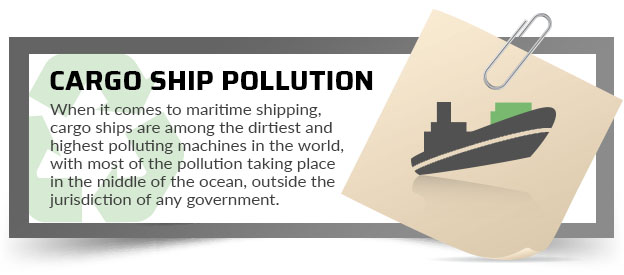
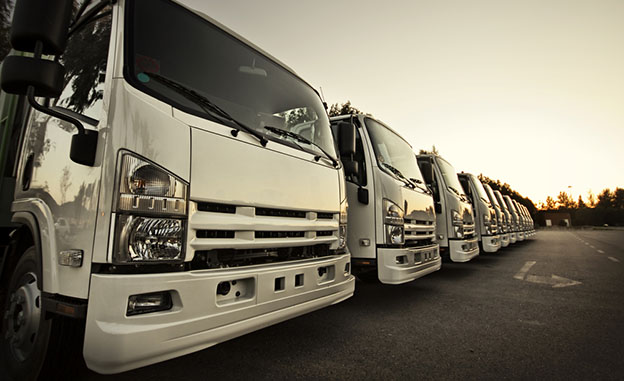
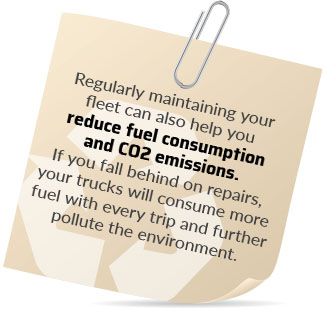 Truck Cabin Temperature Control:
Truck Cabin Temperature Control: 
 Going Electric:
Going Electric: 